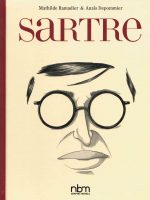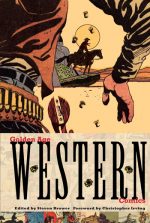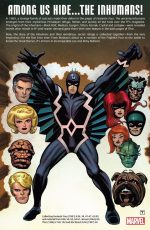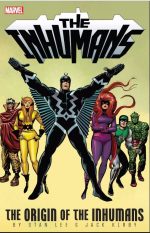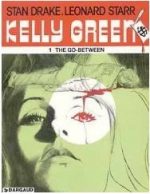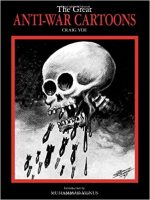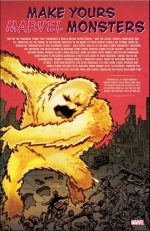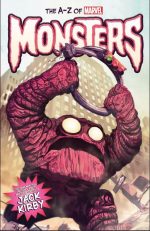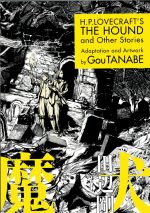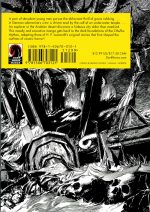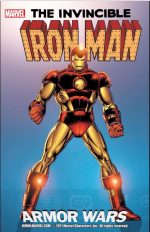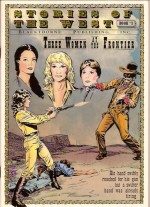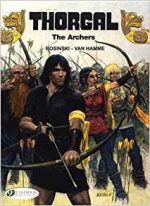
By Rosiński & Van Hamme, translated by Luke Spear (Cinebook)
ISBN: 978-1-90546-067-0
One of the very best and most celebrated fantasy adventure series of all time, Thorgal accomplishes the seemingly impossible: pleasing critics and selling in vast quantities.
The prototypical Game of Thrones saga debuted in iconic weekly Tintin in 1977 with album compilations beginning three years later. A far-reaching and expansive generational saga, it has won a monolithic international following in fourteen languages and dozens of countries, generating numerous spin-off series, and thus naturally offers a strong presence in the field of global gaming.
In story-terms, Thorgal offers the best of all weird worlds, with an ostensibly historical milieu of bold Viking adventure seamlessly incorporating science fiction elements, dire magic, horrendous beasts, social satire, political intrigue, soap opera, Atlantean mystique and mythically mystical literary standbys such as gods, monsters and devils.
Created by Belgian writer Jean Van Hamme (Domino, XIII, Largo Winch, Blake and Mortimer) and Polish illustrator Grzegorz (Kapitan Żbik, Pilot Śmigłowca, Hans, The Revenge of Count Skarbek), the feature grew unstoppably over decades with the creative duo completing 29 albums between 1980 and 2006 when Van Hamme moved on. Thereafter the scripting duties fell to Yves Sente who collaborated on a further five collections until 2013 when Xavier Dorison became chief scribe. In 2016, he and Rosiński released the 35th epic-album Le Feu écarlate.
By the time Van Hamme departed, the canon had grown to cover not only the life of the titular hero and his son Jolan, but also other indomitable family members through a number of spin-off series (Kriss de Valnor, Louve, La Jeunesse de Thorgal) under the umbrella title Les Mondes de Thorgal – with all eventually winning their own series of solo albums.
In 1985 American publisher Donning released a brief but superb series of oversized hardcover book translations (that’s where I first encountered The Archers) but Thorgal never really found an English-speaking audience until Cinebook began its own iteration in 2007.
The original Belgium series wanders back and forth through the hero’s life and Cinebook’s fourth double-album edition (comprising 7th saga Alinoë and 8th epic Les Archers from 1985 and 1986 respectively) finds Thorgal Aegirsson and his new family trying to rebuild their lives in splendid – and secure – isolation…
What Has Gone Before: Thorgal was recovered as a baby from a ferocious storm and raised by Northern Viking chief Leif Haraldson. Nobody could possibly know the fortunate foundling had survived a stellar incident which destroyed a starship full of super-scientific aliens…
Growing to manhood, the strange boy was eventually forced out of his adopted land by ambitious Gandalf the Mad who feared the young warrior threatened his own claim to the throne. For his entire childhood Thorgal had been inseparable from Gandalf’s daughter Aaricia and, as soon as they were able, they fled together from the poisonous atmosphere to live free from her father’s lethal jealousy and obsessive terror of losing his throne…
Danger was always close but after many appalling hardships, the lovers and their new son finally found a measure of cautious tranquillity by occupying a small island where they could thrive in safety…
Alinoe opens on those idyllic shores as Thorgal notices his rapidly growing boy Jolan has somehow learned how to write the runes of the Viking people. The lonely lad has been growing increasingly strange of late, relating things he cannot possibly know, and the parents are painfully aware that the blood of alien supermen runs in his veins…
Short on supplies, Thorgal ships off to the mainland for a few days intense trading, leaving Aaricia and Jolan to fend for themselves, and almost immediately strange events begin to trouble the apprehensive mother…
Firstly, Jolan claims he has been playing with a strange, green-haired boy named Alinoe. Aaricia is prepared to chalk that up to a life starved of companionship, but the new, strangely inscribed bracelet her son wears is certainly real enough, and when Jolan suddenly changes his story she begins to fear the worst…
Carefully spying on her boy, she soon discovers that Alinoe is a solid breathing boy, but a mute, mysterious and increasingly menacing one…
After cornering the green-haired stranger, she is horrified to see the stranger commit suicide and utterly terrified when Alinoe returns and attacks her in the homestead. Slowly the realisation creeps in that the demon child is a manifestation of Jolan’s latent telepathic powers, but things rapidly escalate when the creature grows beyond the boy’s conscious and unconscious control, manifesting as a real and present danger to both mother and child…
A classic horror yarn with a startling and stunning conclusion, Alinoe neatly segues into a bold action romp as The Archers switches to the mainland where bold bandits Kriss of Valinor and Sigwald the Burnt swipe a holt relic from a Caledonian tribe before heading south.
Thorgal meanwhile is again making a supply run from his island home but has the dire misfortune to encounter a savage squall…
Close to drowning, Thorgal is saved by a bombastic youth who braves the storm to guide him to land. Tjall the Fiery is a likable rogue who takes the stranded, suddenly impoverished viking to see his uncle Argun; a brilliant weapon-smith and armourer known to all as Tree Foot.
A master maker of unique arrowheads and other clever gadgets, the old man has a potential solution to Thorgal’s plight. An archery contest in nearby Umbria offers enough gold to buy a new, weapons and supplies. With nothing to lose, the shipwrecked mariner considers the proposition but only agrees after sinister Sigwald and Kriss drop by Tree Foot’s forge in search of fresh weapons.
The bandits make a big impression on Thorgal, but Kriss makes an even bigger one on lusty, impressionable young Tjall…
Later, after setting off for Umbria, the archers encounter the bandits once more: captives of a band of vengeful Caledonians seeking redress for a stolen religious relic. Thorgal’s scheme to free them is almost flawless, and only founders because outraged, liberated Kriss demands reparations in blood…
Following an utterly unnecessary slaughter the thieves and heroes have a falling out over Kriss’ mad behaviour…
The tournament in Umbria is a masterclass in martial skill, competitor-skulduggery and regal cruelty with the local king delighting in humiliating and endangering his contestants in equal measure. However, after days of competition the purse is finally awarded collectively to Tree Foot, Thorgal, Tjall and Kriss, but the bandit – never a fan of sharing – quickly absconds with it all…
Unsurprised but resolute, her fellow champions set off in pursuit only to find their quarry and Sigwald have been cornered by another, far larger band of Caledonians. The barbarians only want their holy gem back and a rightful measure of retribution: All Thorgal and his companions have to do is ride away…
How can they choose any other course but the most sensible one?
Fierce, funny and phenomenally gripping, this cunningly crafted, astonishingly addictive tale offers a keen insight into the character of a true, if exceedingly reluctant hero.
Thorgal is every fantasy fan’s ideal dream of unending adventure. What fanatical fantasy aficionado could possibly resist such barbaric blandishments?
Original editions © Rosiński & Van Hamme 1985 Les Editions du Lombard (Dargaud-Lombard). English translation © 2008 Cinebook Ltd.

